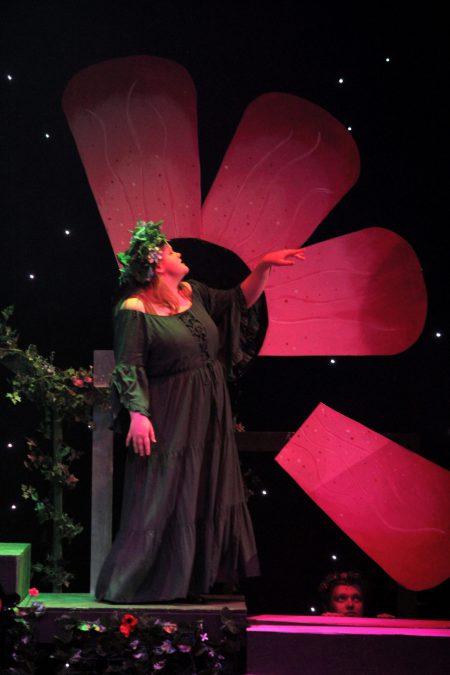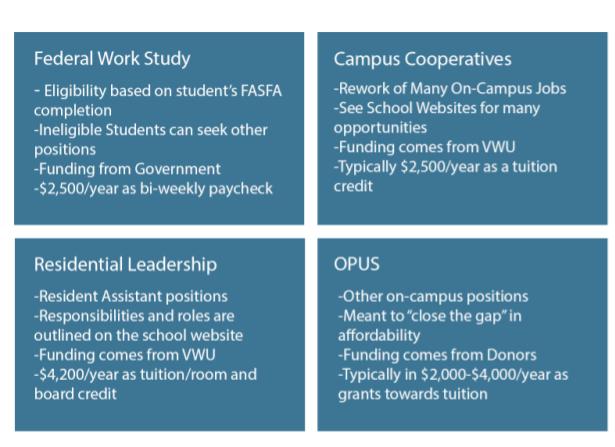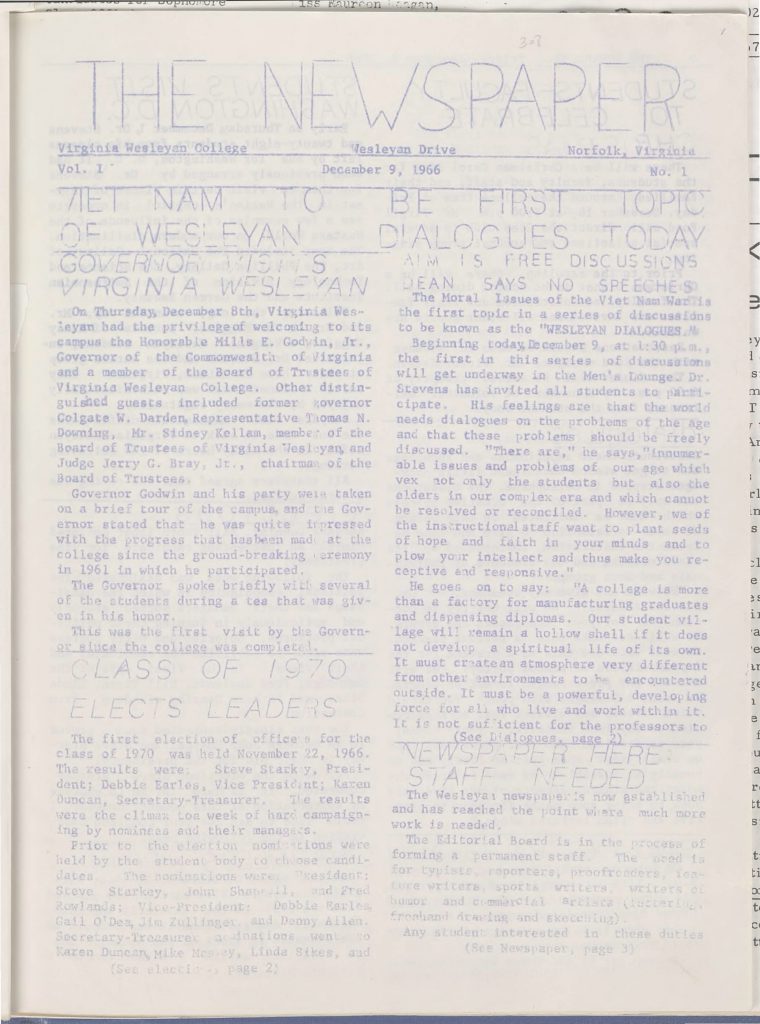Erin Andrews depicting Titania, Queen of the Fairies in “A Mid-
Summer Night’s Dream.”
McKenna Howenstine|Marlin Chronicle
VWU’s theatre and music departments are putting on an original production of ‘A Midsummer Night’s Dream’ that’s worth seeing — and hearing.
A playful fairy sits, invisible, toying with bumbling humans trying to love. Perhaps this is what you think of when you consider William Shakespeare’s “A Midsummer Night’s Dream.” It’s what I think of. Generally, though, that faerie isn’t holding a microphone.
Virginia Wesleyan’s Theatre Department is performing “A Midsummer Night’s Dream” in conjunction with Vox Vera on April 3-5 at 7:30 p.m. and on April 6 at 2 p.m. for a Matinee. For our early readers, that is this Thursday through Sunday.
The VWU website where you can “purchase” tickets (free for Virginia Wesleyan students, faculty and staff) describes the play as a “unique retelling of Shakespeare’s classic” where “fairies groove a cappella and the visual vibe can only be described as ‘far out, man.’”
The show is a collaboration between the Theatre and Music programs, headed by Sally Shedd, professor of Theatre, Gender, Women and Sexuality Studies and dean of the Susan S. Goode School of Arts and Humanities, and Bryson Mortensen, professor of Music.
“This project is really special to me,” Shedd said.
“We wanted it to be in the spring — we’ve been talking about it for several years,” Shedd said, referring to herself and Mortensen.
The show is a “modernization” of a Shakespeare play. The costuming and most of the dialogue is unchanged, but the music is modern, as are some of the staging and acting decisions. In any case, performing the show with its original soundtrack would be a feat, as it’s been lost to time.
The changes were well done and a novel experience of the play, which is certainly what you want with Shakespeare, as it’s unlikely to be anyone’s first time experiencing it, or at least hearing of it.
The play, unlike most plays that the theatre has performed over the past several years, is in the public domain, which means “you can do whatever you want,” Shedd said. The desire was to “update” the music. The music was performed by Vox Vera.
Most of these changes are positive, and the overall effect is a sort of dreamy, out of time feel, which is very appropriate for “A Midsummer Night’s Dream” in particular.
“I love Shakespeare — I love it. It is a very vital and living art to me,” Shedd said. She thought the juxtaposition of the Shakespearean words and Coldplay, as she put it, showed “the timelessness of art.”
Contributing to this dreamy feel was the dancing. “Hopefully it looks weird and quirky and that they’re having a great time,” Shedd said. The dancing is anachronistic but matches the vibe of the play well and contributes to the wild feeling of the play that’s so difficult to capture when you share a chemistry class with three of the actors.
Shedd said the dancing was largely up to the actors, with minimal direction.
“Y’all go create something, then come back and show me,” Shedd said about her directions for this section. There was a prize, because “nothing motivates people like a prize.”
The casting was different from the original as well. For one thing, there were women cast, which on general principle is a good idea. Done especially well in the casting was a deviation from the “expected” roles. For instance, Robin “Puck” Goodfellow is played by Annie O’Shea, who excelled. Oberon, King of the Faeries, is played by Amanda Battle, who put on a memorable performance.
The Mechanicals, on another note, performed very well at performing very badly. Nick Bottom, played by Grant Williams, was fantastically an ass, and Sanayia Butler put on a performance as Snug that almost made the Mechanical’s fear about scaring the ladies reasonable.
Micah Lister, John Post, Julia Logue and Brianna Massenburg played the four “lovers.”
Lister, a sophomore studying Biochemistry, was cast as Lysander, one of the male leads. This is his first play and he said it is “a completely new experience for me compared to musicals.”

Jordan Crallé (left) playing a fairy recognizing Puck, a mischievous fairy played by Annie O’Shea
(right).
McKenna Howenstine|Marlin Chronicle
All four performed well at the rehearsal I went to, but Logue’s performance as Helena was especially compelling.
The stage design was well done, with a giant flower and other props providing a sense of whimsy appropriate to the play. The costuming on the faeries was done very well to complement this, although the Athenian’s costumes looked somewhat uninspired by comparison (with the exception of Theseus’, played by Liam Davis).
Some of the dialogue was hard to understand due to volume or enunciation, but for a Shakespeare play it was remarkably understandable. Additionally, one of the sound mixers was absent at the rehearsal I attended, which likely contributed to this small issue.
Shedd’s favorite part is the end of the play, near the bows. 28 people are on stage at the same time. “There they all are, and it’s really special,” Shedd said.
As I have unfortunately not yet acquired the ability to review theatre before it comes out, The Marlin Chronicle obtained permission to observe and photograph a dress rehearsal for this article. The review is based on that dress rehearsal.
The performance is free for Virginia Wesleyan students, faculty and staff, and tickets can be acquired at https://www.vwu.edu/the-arts-at-virginia-wesleyan/theatre-productions.php. I highly recommend going. Free theatre is rare, and good free theatre is rarer. This is both.
By Victoria Haneline


